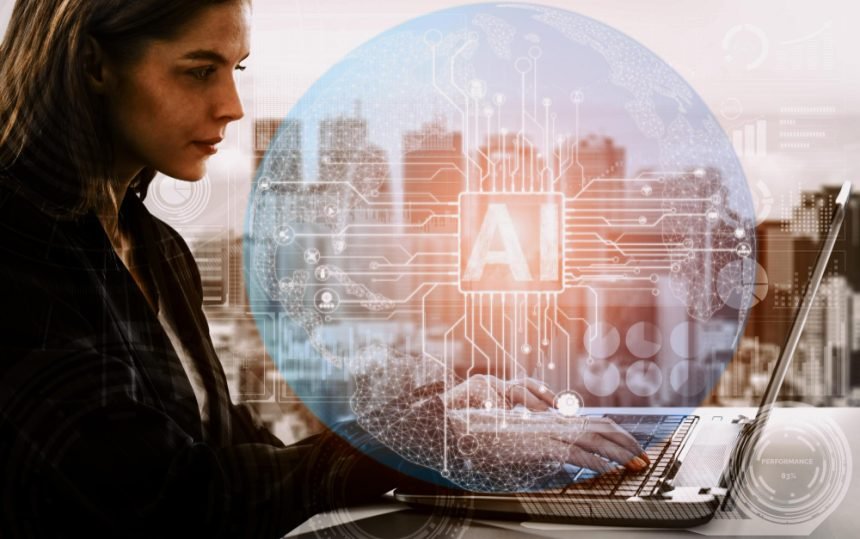As artificial intelligence (AI) continues to reshape industries at breakneck speed, the role of C-suite executives in steering their companies through this technological evolution has never been more crucial. The rapid adoption of AI tools and automation presents both unprecedented opportunities and significant challenges. For executives, the key to ensuring long-term success lies in fostering a future-ready workforce—one that blends human intelligence with machine capabilities.
In this new era of work, leaders must not only embrace AI but also prepare their teams to thrive alongside it. The strategies to do so revolve around three core pillars: upskilling the workforce, strategic implementation of AI tools, and maintaining the human element in business.
Upskilling the Workforce: Preparing for Tomorrow’s Challenges
The future of work demands a workforce that is skilled in both the technical aspects of AI and the adaptive soft skills necessary to leverage these technologies. For executives, this means implementing robust upskilling and reskilling programs to prepare employees for emerging roles that blend AI capabilities with human judgment.
McKinsey’s research predicts that by 2030, nearly 375 million workers worldwide may need to switch occupational categories due to automation. This presents an urgent need for organizations to invest in continuous learning. Upskilling efforts should not only focus on technical skills like data analysis or AI tool management, but also critical thinking, creativity, and emotional intelligence—skills that machines cannot replicate.
Leading companies are already embracing this approach. For example, AT&T launched a $1 billion initiative to upskill its workforce for digital transformation, providing training in areas like data science and software engineering. C-suite leaders must ensure that similar investments are being made to future-proof their own teams.
Strategic Implementation of AI Tools: Aligning with Business Objectives
While AI promises to revolutionize industries, its benefits will only be realized if these tools are strategically implemented. It’s not enough to adopt AI for the sake of innovation; it must be closely aligned with a company’s business objectives. For C-suite executives, this involves asking the right questions before deploying AI:
- How does this tool enhance decision-making?
- Can it streamline operations or open new revenue streams?
- What value does it bring to both the customer and the organization?
A well-integrated AI system should complement human roles, allowing employees to focus on higher-value tasks. For example, Accenture uses AI to assist in data processing and analysis, enabling consultants to focus on strategy and relationship-building with clients. By automating repetitive tasks, executives free up their teams to work on creative problem-solving and customer engagement.
Furthermore, AI tools should be deployed incrementally and thoughtfully. Pilot programs can help mitigate risks and provide valuable data for optimizing full-scale rollouts. Leaders must take a proactive role in overseeing AI implementations to ensure that they are not only efficient but also ethically sound.
Balancing AI and Human Intelligence: Keeping the Human Element Alive
While AI is transforming the workplace, it’s critical to recognize that human intelligence remains irreplaceable. Empathy, leadership, complex decision-making, and customer relations—these are areas where humans excel and where AI can only support, not substitute.
In a report by Deloitte, executives noted that 82% believe human-machine collaboration will be essential to their success, but only 47% felt their workforce was ready for it. Bridging this gap requires cultivating an organizational culture that values collaboration between humans and machines, rather than fearing AI as a job killer.
C-suite leaders must champion this collaboration by maintaining transparency about the role of AI in the organization. They should also foster an environment where creativity and innovation are encouraged, even in AI-driven roles. For example, Amazon uses AI for its logistics and supply chain management but empowers human workers to focus on strategic planning, customer service, and innovation.
Finally, maintaining the human element in AI strategy also requires a commitment to ethical practices. Concerns about AI bias, privacy, and job displacement should be addressed through clear governance frameworks, ensuring that AI serves both business goals and societal good.
Conclusion: Leading Through the AI Revolution
The future of work, powered by AI, is not just about adopting new tools but creating a cohesive strategy that ensures human workers are empowered to thrive alongside machines. C-suite executives are at the helm of this transformation, and their leadership will determine how successfully their companies navigate the complexities of AI integration.
The key to success lies in balancing the efficiency of AI with the irreplaceable qualities of human intelligence. By investing in upskilling, strategically implementing AI, and fostering human-machine collaboration, today’s leaders can build a future-ready workforce that drives innovation and growth in the age of AI.
Sources:
- McKinsey & Company, “The Future of Work After COVID-19”
- Deloitte, “AI and the Future of Work”
- Harvard Business Review, “How AT&T Is Preparing for the Future of Work”





